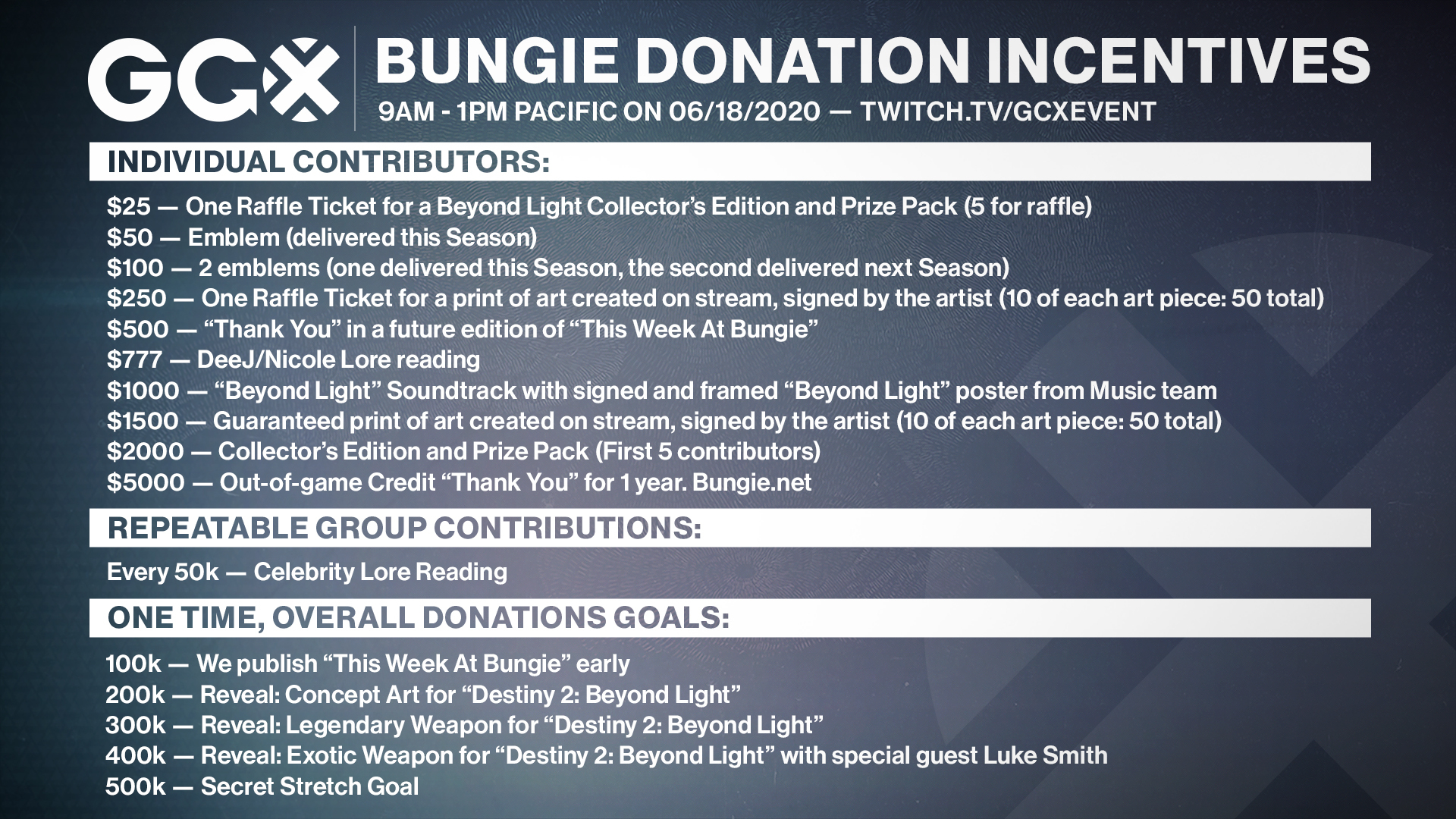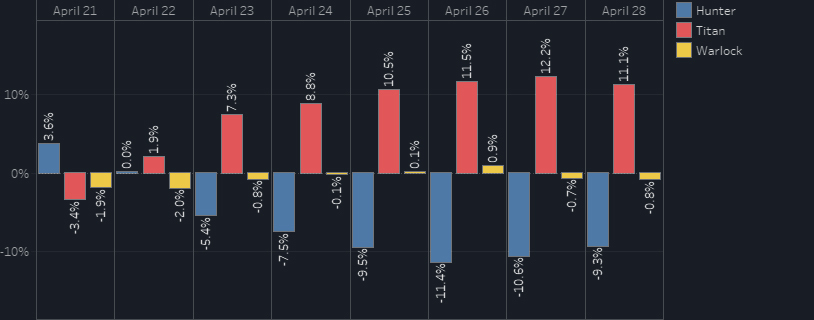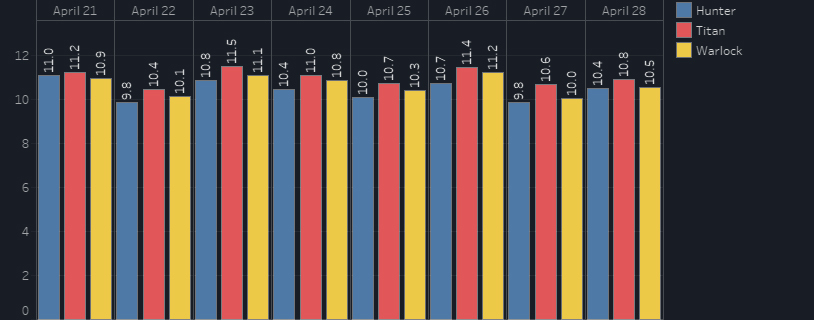
Jun 18, 2020
Destiny 2 - dmg04
This Week At Bungie, we’re streaming… for the kids!
Hello there. If you’re reading this right at the moment of publication, then congratulations. You’ve just hit the $100k benchmark for our slot on the GCX stream! If you have no idea what I’m talking about, let’s break it down.

Between 9 AM and 1 PM PDT today, we’re live on the GCX Marathon Charity Stream, raising funds for St. Jude Children’s Research Hospital to help support children in need. Your donations help families around the world by contributing to the research and treatment of cancer. While you can take pride in helping by donating a few dollars, we also have a variety of incentives to provide some additional motivations.

If you haven’t donated, this is your chance! And if you missed our live stream, no worries – this initiative is being supported by many in the gaming community. Jump in and check it out.
We have some information regarding known issues and upcoming hotfixes in the full TWAB. Head over to Bungie.net for more!
Hello there. If you’re reading this right at the moment of publication, then congratulations. You’ve just hit the $100k benchmark for our slot on the GCX stream! If you have no idea what I’m talking about, let’s break it down.

Between 9 AM and 1 PM PDT today, we’re live on the GCX Marathon Charity Stream, raising funds for St. Jude Children’s Research Hospital to help support children in need. Your donations help families around the world by contributing to the research and treatment of cancer. While you can take pride in helping by donating a few dollars, we also have a variety of incentives to provide some additional motivations.

If you haven’t donated, this is your chance! And if you missed our live stream, no worries – this initiative is being supported by many in the gaming community. Jump in and check it out.
We have some information regarding known issues and upcoming hotfixes in the full TWAB. Head over to Bungie.net for more!




 [Full Stream video]
[Full Stream video]
